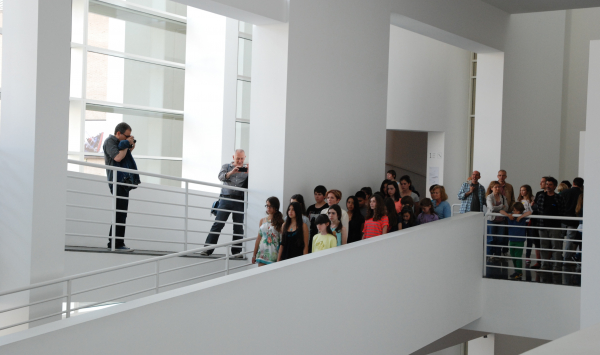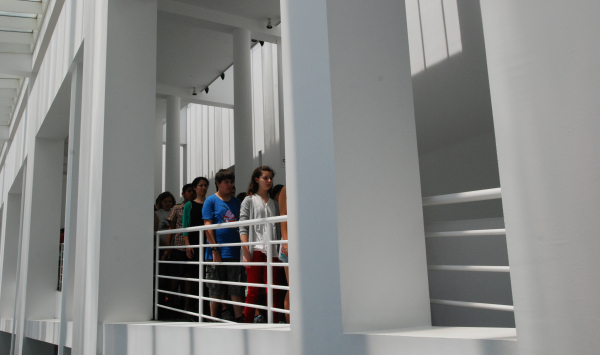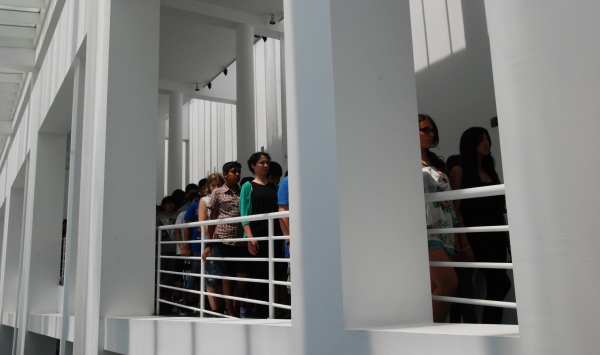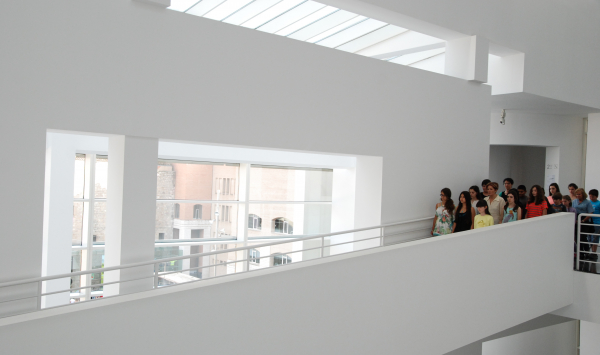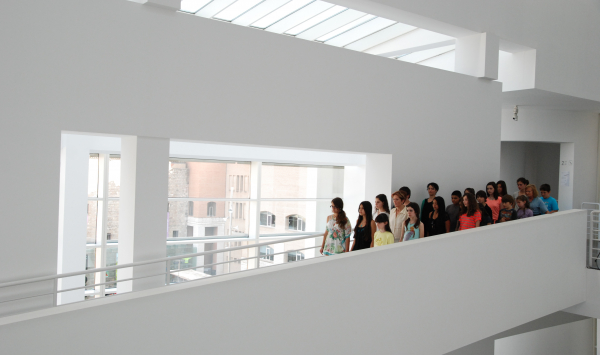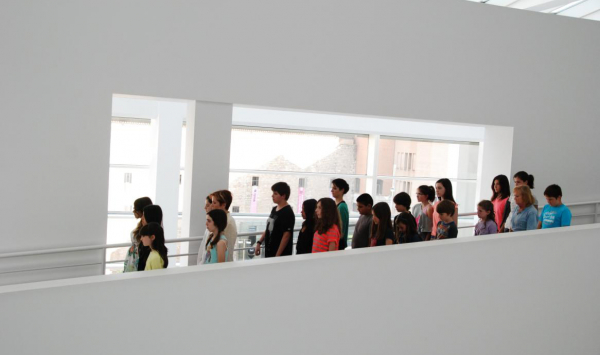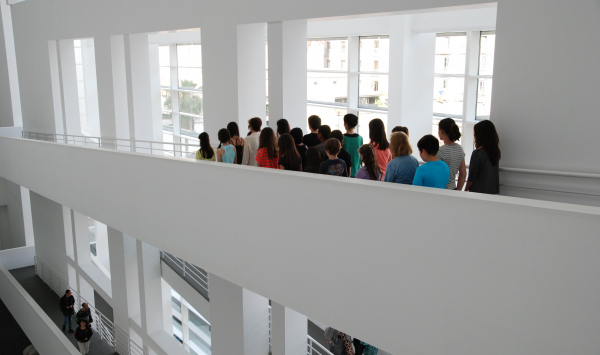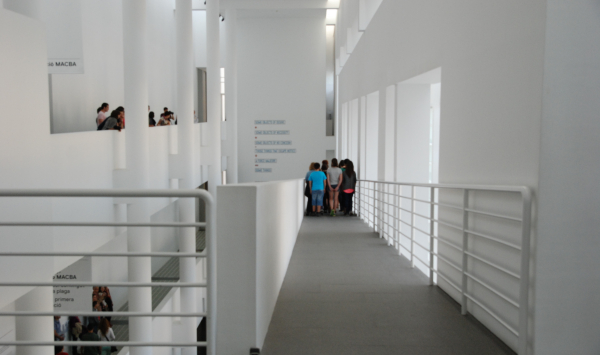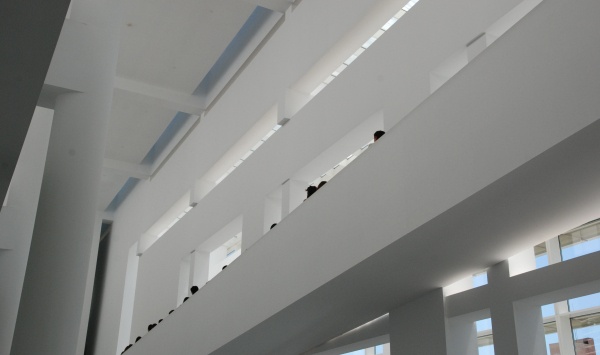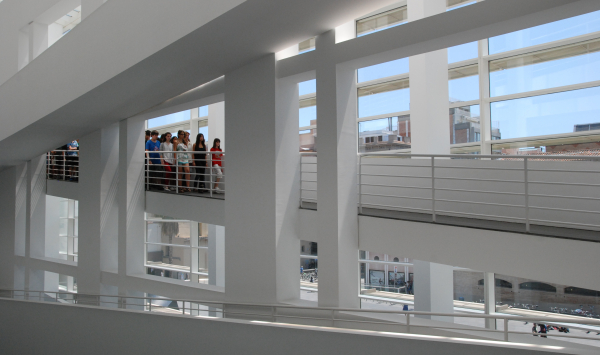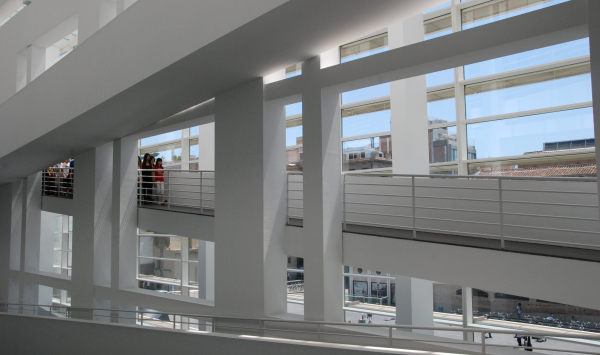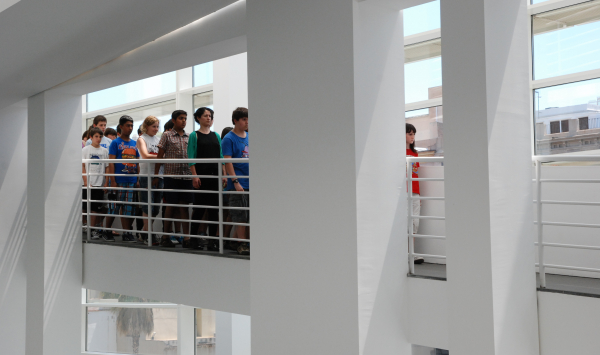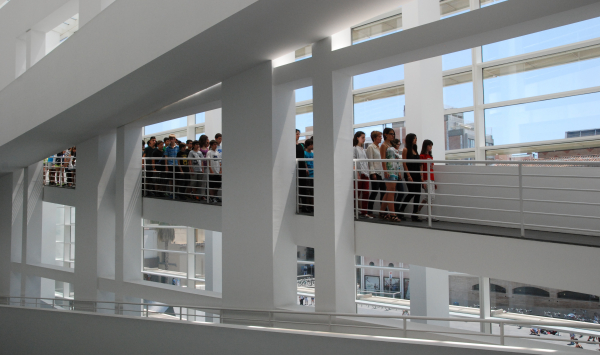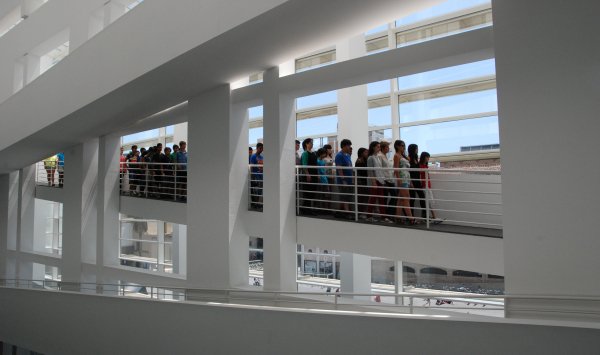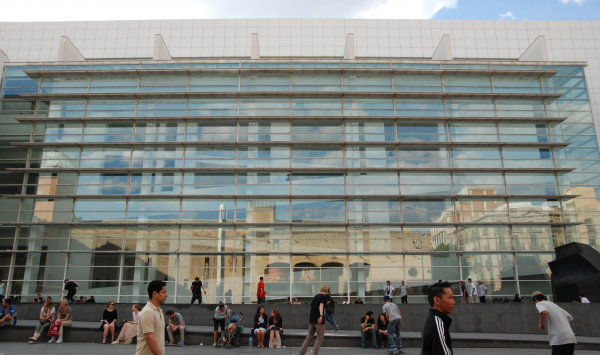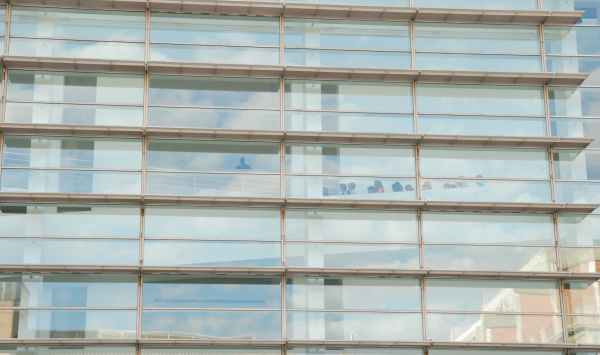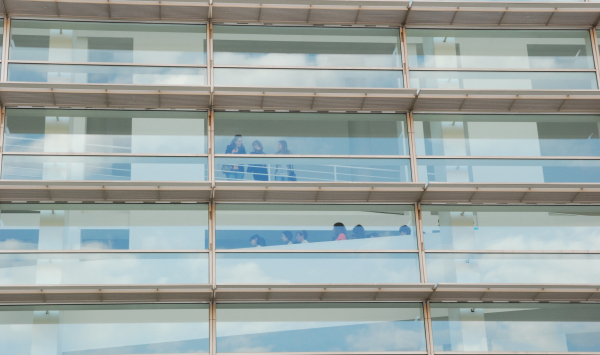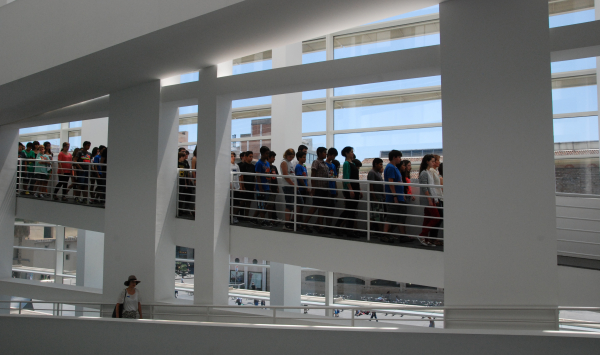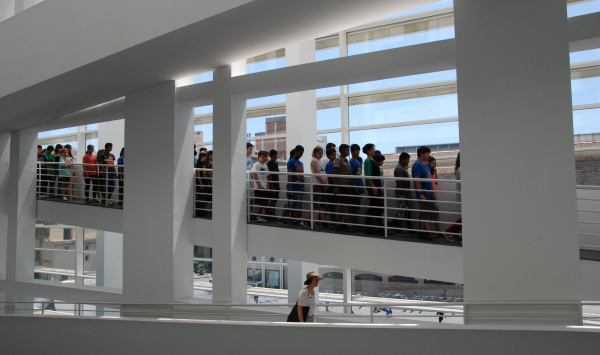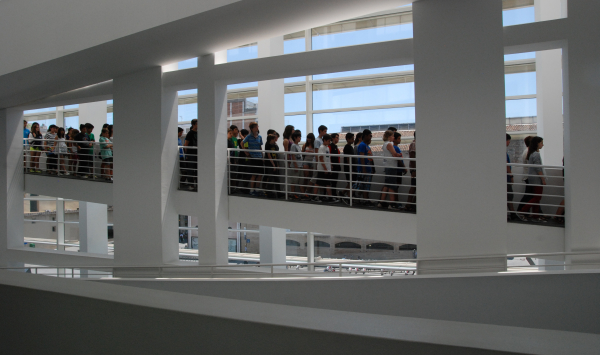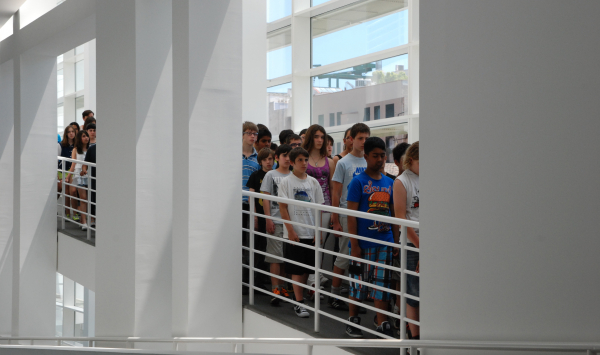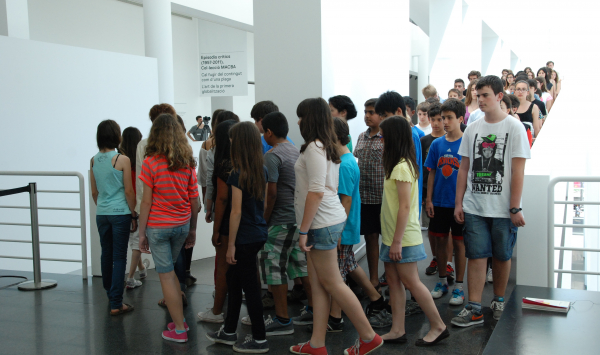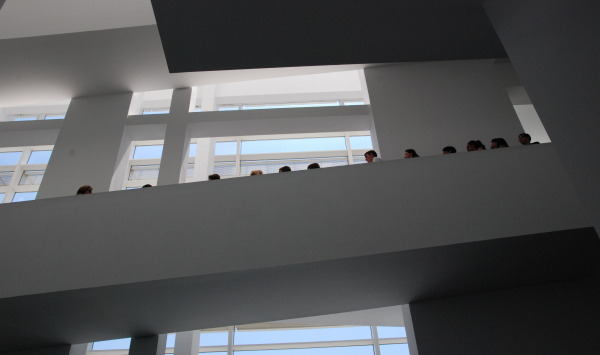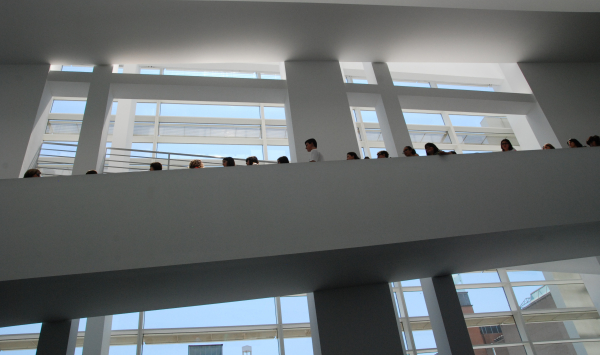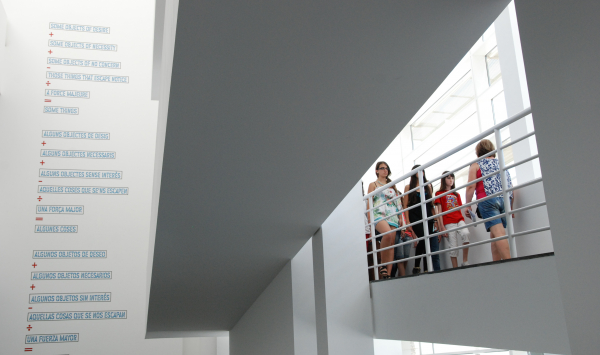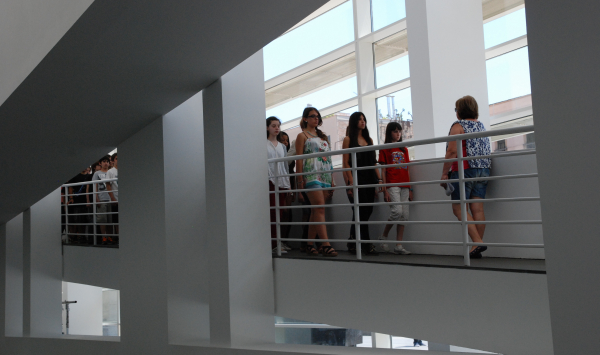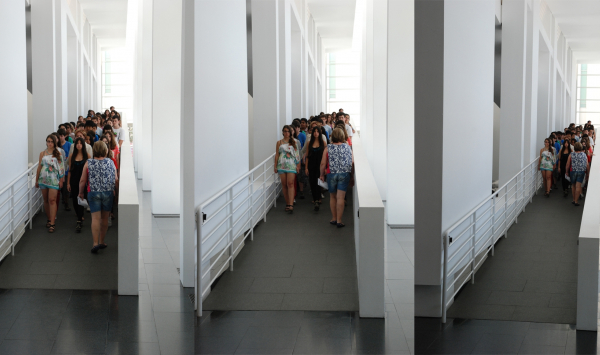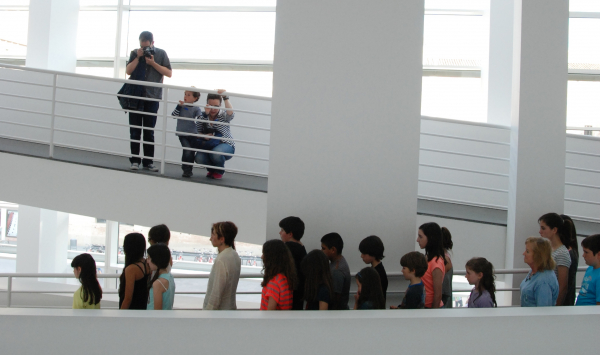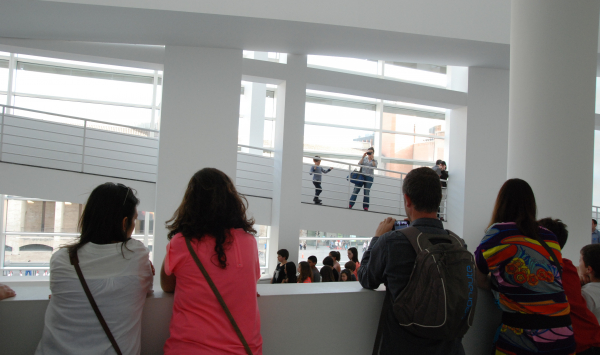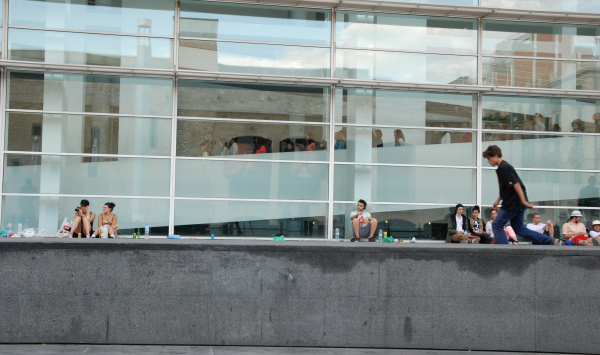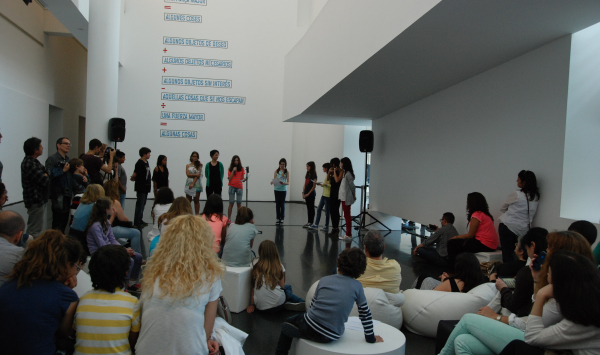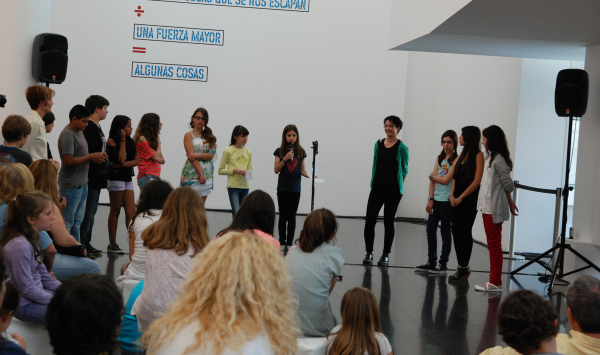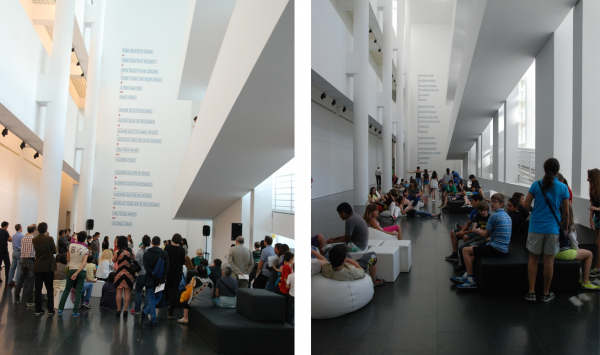- 14th EDITION 2022 / 2023
- 13th EDITION 2021 / 2022
- 12th EDITION 2020 / 2021
- 11th EDITION 2019 / 2020
- 10th EDITION 2018 / 2019
- 9th EDITION 2017 / 2018
- 8th EDITION 2016 / 2017
- 7th EDITION 2015 / 2016
- 6th EDITION 2014 / 2015
- 5th EDITION 2013 / 2014
- 4th EDITION 2012 / 2013
- 3rd EDITION 2011 / 2012
- 2nd EDITION 2010 / 2011
- 1st EDITION 2009 / 2010
Mireia c. Saladrigues IN RESiDENCE at the School Quatre Cantons
Txssssit!
Txssssit! [Shhhhhhh!]
Publication and action at MACBA (video)
[Publication]
First edition of 300 copies: June 2013
Working with pupils aged from twelve to fourteen years form the Quatre Cantons secondary school, we will form a team study, as if we were private investigators, how a museum of contemporary art operates. We will collect information about public behaviour and rituals of appreciation, we will observe the institution and its different departments, study the normalisation of the exhibition space and work with the security guards. We will visit the collection and gain an understanding of conservation protocols, study how the exhibitions establish a narrative... And, after all this, seeing the process as a form of creation, we will all decide together what our project should concentrate on and what form it should take. If, as Pierre Bourdieu suggests, access to the museum is, in the end, the fruit of a cultural need and, therefore, the opening of the museum or art centre to different audiences is artificial, the museum, with its original function of affirming and conserving a given cultural dominance, could end naturalising the inequality between cultural needs and social and economic inequalities. In view of all this, the school should be a place from which to challenge the ideology of cultural needs. That is to say, the school should provide tools to enable pupils to understand the functioning code of the museum. Altogether, we will be able to achieve this?
This was a project resulting from the research that the group did over the whole academic year into the functioning of MACBA as a museum institution. The art project that the group worked on during the residency produced two results: an intervention at MACBA and a publication. The intervention was aimed at exploring the limits of the museum: all participants in the residency (and any visitors at the gallery who wished to join in spontaneously) went down the ramp at the site extremely slowly. Twice, they repeated, in robot-like voices, in Catalan, Spanish and English, certain prohibitions and regulations at the museum: “Silence, please”, “Please do not touch the works”, “Please don't run” and so on. The intervention took place on Saturday, June 1 within the context of the El MACBA és viu (MACBA is Alive) programme. The action was also repeated on Friday, June 14, this time with all the pupils from the school and during normal museum opening times.
The publication detailed the creative process and the cognitive and educational benefits generated by the research and the experience of working with an artist by a group of pupils aged from 12 to 14. Together, they studied public behaviour and rituals of appreciation, observing the institution and its departments, and meditated on the “normativisation” of the exhibition space, as well as visiting the collection and learning about such matters as conservation and security protocols at the site.

